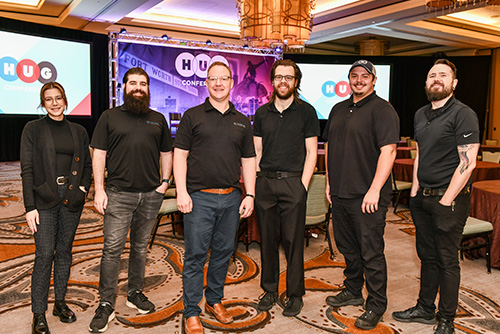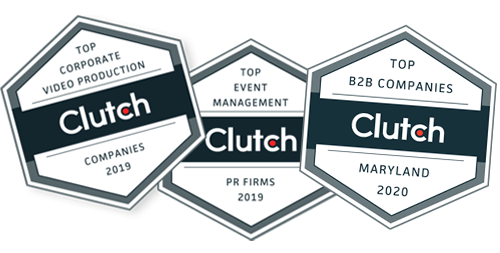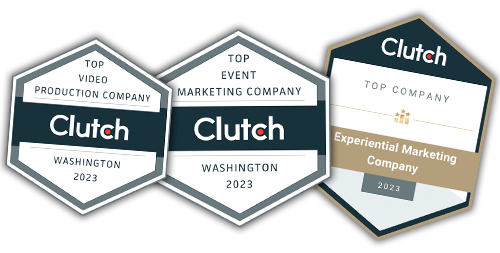 In today’s business climate, associations are experiencing a period of rapid, often wrenching change. For years, certain professions and industries were so tied to their respective associations that the financial stability and success of the association itself seemed unquestionably assured.
In today’s business climate, associations are experiencing a period of rapid, often wrenching change. For years, certain professions and industries were so tied to their respective associations that the financial stability and success of the association itself seemed unquestionably assured.
Today, three trends have driven a dramatic shift in how current, past and future prospective members view their decision to join and become active in associations:
Time: Time is at a premium like never before.
Technology: New technology provides direct and open access to formerly closed or association-controlled audiences or markets.
Budget: Every cost – and especially those involving travel, conferences and events – is being scrutinized for value.
In that climate, it is incumbent upon association leaders to dramatically rethink every aspect of their member experience, from dues-based services to non-dues revenues and beyond. This is both to retain existing members, and to re-define and enhance the association’s future value proposition in the marketplace.
Events serve as a cornerstone of successful association programming, and in many cases they create the most memorable membership experience over the course of the year.
It is essential, therefore, that we rethink their strategic role and operating structure in order to improve the impact they can achieve. Here are six strategies you can use to build better member buy-in through your association events:
1. Streamline Your Event Strategy and Leadership
Traditionally, associations have viewed their events through the lens of functional and programmatic ties. A typical association, for example, might be administering its annual dinner through one committee or team, the annual legislative action event through yet another, and professional development programs under, again, separate leadership. The result of this approach is often nothing more than a fragmented, inconsistent and disconnected event experience.
Every time an email, flyer or program announcement goes out with a different design, changed wording, modified language or a new tagline or angle, you’re reminding members that the organization is in chaos and cannot get its act together. If this incoherence is committee-driven, remove the committees from control. Yes, committees are made up of members, but they are not made up of all of the members. Strategic management of events and their design, development and execution has to come from the top.
2. Integrate Events Around Year-Long Messages
Each year, your association has the opportunity to establish a message that will resonate with members during that time period. Remember, most memberships are annual, so this also coincides with the amount of time most members are ‘bought in’ as it is. Anything you can do to strengthen that perception of engagement and value during the year will clearly improve renewals.
Therefore, use your annual planning process to create structured themes that will tie programs and events together throughout the year. For example, if you elect to focus on how digital technology is changing your industry, think about how your webinars can connect to that theme; seminars and workshops can feature member success stories around it; your annual legislative conference or fly-in can focus on lobbying to reduce restrictions or increase government funding around digital innovation; and your annual conference and awards dinner can dynamically bring this theme to life.
3. Connect Live and Online Programs
Since many associations categorize webinars as ‘education’ and in-person programs as ‘events’, the disconnect across these areas becomes a glaring testament to organizational confusion. Solve that problem by requiring each program or process to involve both live and in-person programs. For example, start a new certification program with online sessions, then offer an optional accelerated option the day before your annual conference or trade show.
Another key is to balance curricular, informative and social components for your programs. For example, you can hold a webinar series with individual industry experts, then bring them together for a live, in-person panel event in which the speakers also mingle with members. Follow that with a series of online chat sessions such and you’ll create a truly dynamic program.
4. Make Events Peer-to-Peer Focused
Most associations suffer from the suffocation of having plenty of members who want to decide things (such as the theme for the annual dinner, or the wording of the next legislative alert), but who are less interested in doing things. One way to solve this problem is to make your events more peer-to-peer focused. Hold more workshops, panel sessions and “How I did it” dialogues about the business issues facing members and their businesses or organizations. Make sure to use qualified, highly polished moderators and insist that everyone do their homework in preparation – and create a repeatable process so that it’s quick and easy to bring members into this program in the future.
5. Create Outside Buzz and Engagement
One thing that members can benefit from is less focus on just connecting with other members, and more focus on meeting people who are outside the membership base but who can add enormous value or credibility. Partner with another, non-competing association on a joint event series (for example, an architecture association and an engineering and construction trade group), so that buyers and sellers are more likely to meet each other, rather than just peers and competitors. Anything you can do to increase the reach and pull of your members has a potentially exponential impact on their business experience, and makes your organization more powerful.
6. Develop Powerful Experiences through Event Design
Event design is the process of crafting an event experience, rather that just assembling the parts. A professional event design and production process can dramatically impact the results you gain from association events. For example, an annual dinner with a technology theme may be a good idea – but using digital screens with layered videos of member success stories, integrating real-time social media activities and organizing music and imagery to support the theme are what ‘hit the ball out of the park’ and make for an unforgettable evening.
By committing to these six strategies, you will find new opportunities to revolutionize your event strategy and execution – and create far more engaged and enthusiastic members through your enhanced event experiences.
For more information about association event design and production in Baltimore and Washington, D.C., contact TalkingTree Creative today by calling 240.252.1200 or via email to craig@talkingtreecreative.com.
About TalkingTree Creative
Talking Tree Creative is an event production company that creates memorable experiences and lasting impressions on screen, on stage, and online. Headquartered in Washington D.C. and Baltimore, TalkingTree Creative serves clients in the private, non-profit and government sectors. The firm is a leader in the event production and corporate theater field, infusing its work with elements of creativity, entertainment, and engagement. For more information about TalkingTree Creative, please visit talkingtreecreative.com. Follow TalkingTree Creative on Facebook, Twitter, Google+, and LinkedIn to stay up to date with our latest projects. Get a dose of visual inspiration by checking us out on YouTube and Pinterest as well.
Image Credit: j_benson (Flickr @ Creative Commons)




